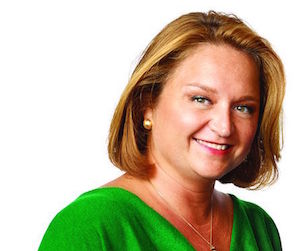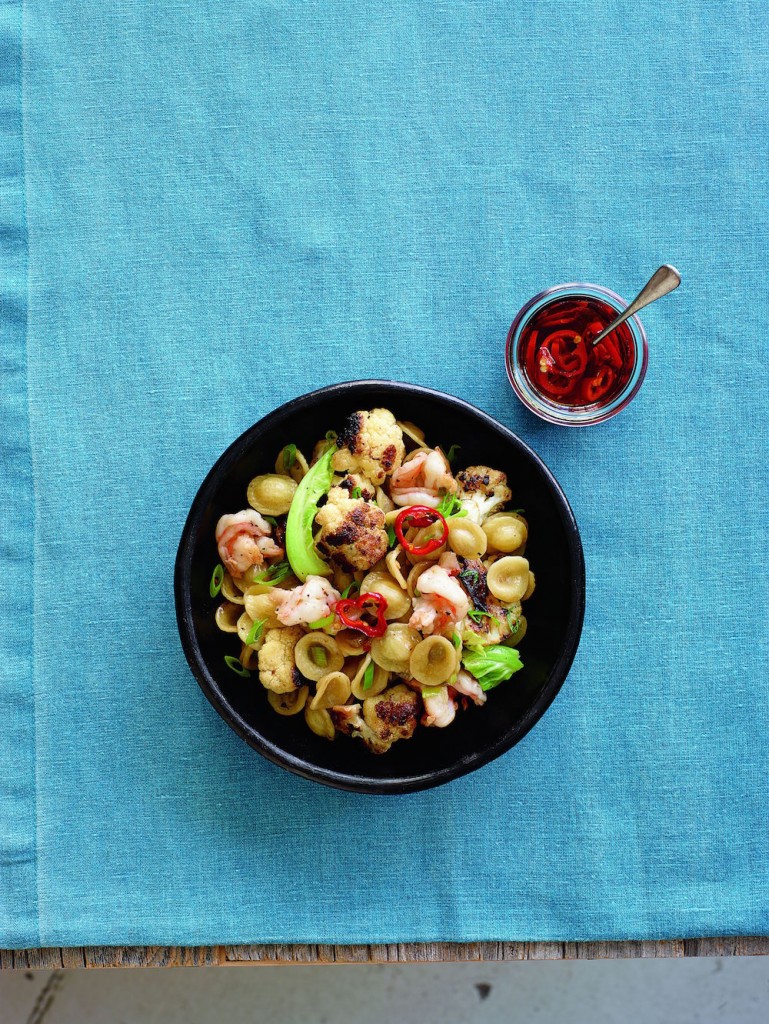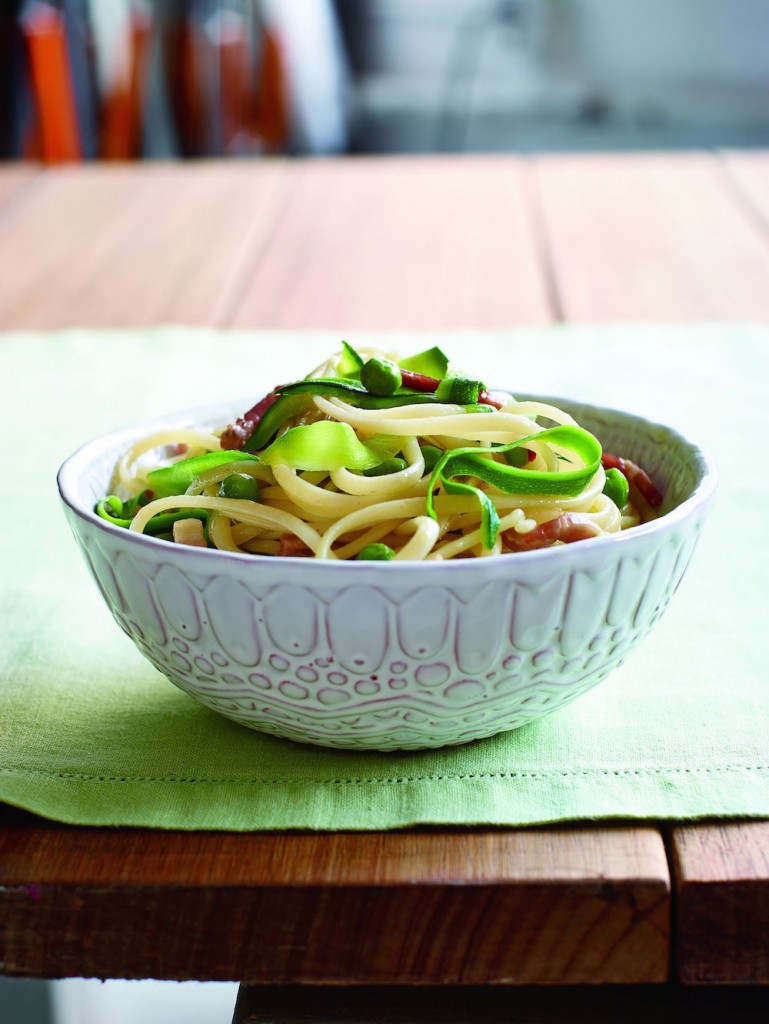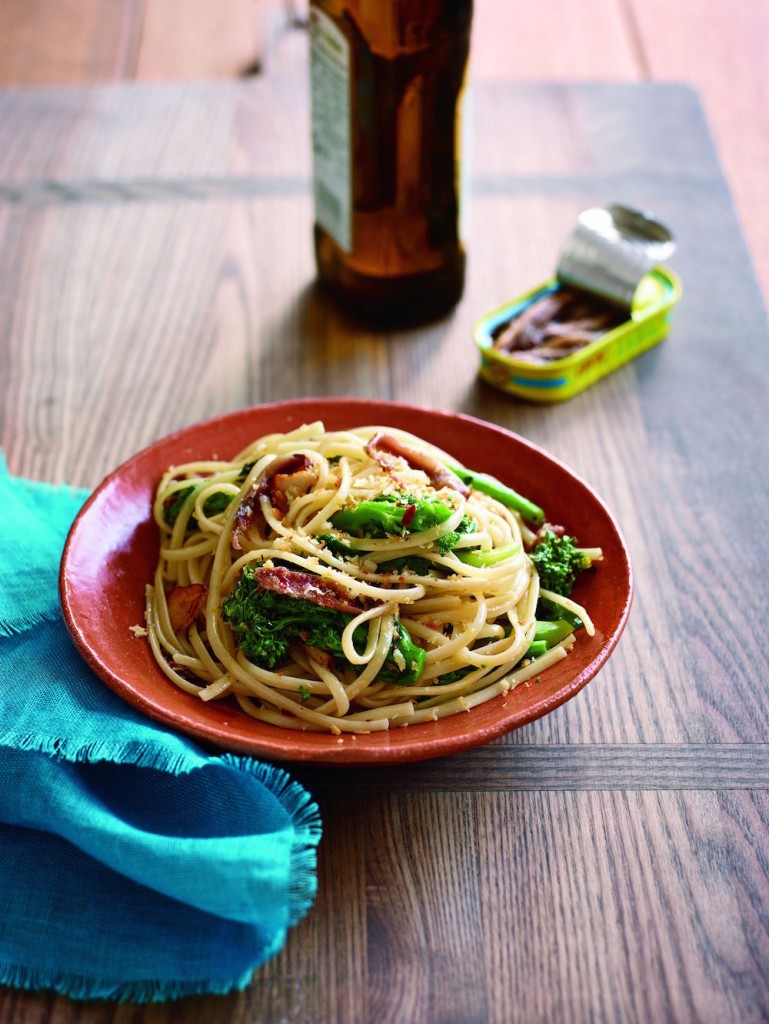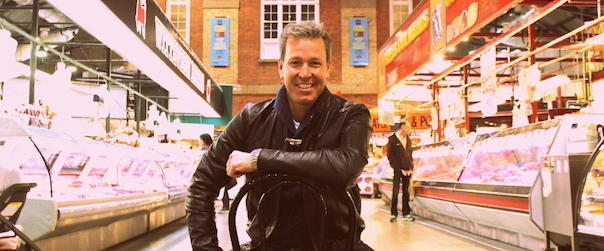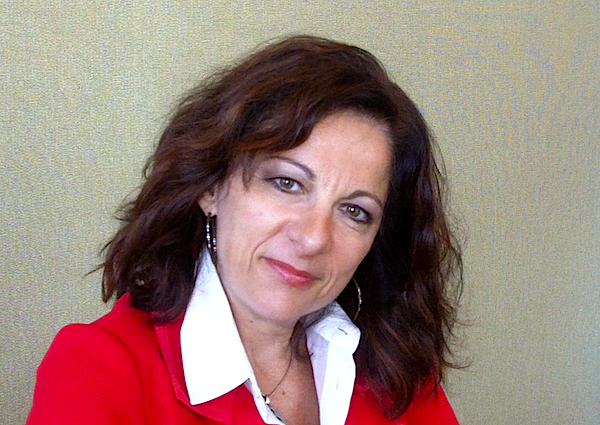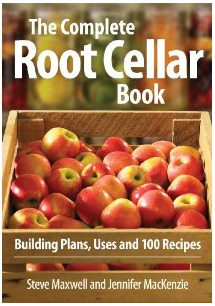
Siblings Tanya Bastianich Manuali and Joseph Bastianich have co-authored Healthy Pasta. Photo: Steve Giralt / stevegiralt.com
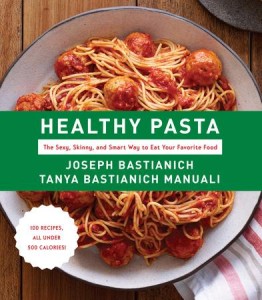 Tanya Bastianich Manuali, may not be as well known as her mother Lidia Bastianich, or her brother Joe because her role in the businesses associated with that grand American-Italian food family is more behind the scenes. Manuali, who holds a doctorate in Italian Renaissance Art from Oxford, for instance, manages with her husband Corrado, Nonna’s Foods, which makes the Lidia’s lines of pasta and sauces. She is involved in much else, including restaurants, TV productions and books with her mother, but her latest project is in collaboration with her brother, the new cookbook Healthy Pasta: The Sexy, Skinny and Smart Way to Eat Your Favorite Food. The book is collection of traditional and more innovative pasta recipes, all under 500 calories.
Tanya Bastianich Manuali, may not be as well known as her mother Lidia Bastianich, or her brother Joe because her role in the businesses associated with that grand American-Italian food family is more behind the scenes. Manuali, who holds a doctorate in Italian Renaissance Art from Oxford, for instance, manages with her husband Corrado, Nonna’s Foods, which makes the Lidia’s lines of pasta and sauces. She is involved in much else, including restaurants, TV productions and books with her mother, but her latest project is in collaboration with her brother, the new cookbook Healthy Pasta: The Sexy, Skinny and Smart Way to Eat Your Favorite Food. The book is collection of traditional and more innovative pasta recipes, all under 500 calories.
Recently in Toronto to promote Healthy Pasta, I sat down with Tanya Bastianich Manuali for the interview below.
This interviewed has been edited for clarity and style. The photos from Healthy Pasta are all by Steve Giralt (stevegiralt.com).
Good Food Revolution: I was really delighted to read your book because it seems to me to be a shot fired against the war against pasta and wheat and all that insanity about carbs.
Tanya Bastianich Manuali: Yes, yes. People feel liberated when we talk about it now. They say, “Really? I can eat pasta, again? I don’t have to be on an only salad, or raw, or protein diet?” and we say, “No! you’re supposed to eat a little bit of everything.” That’s how your body stays healthy, and you need carbs, especially if you’re exercising and moving your body. Carbs are the good fuel for your body. So, this is the message: you can eat healthy pasta!
It’s not the message that you can eat pasta with carbonara sauce everyday and stay skinny. That’s not the message. The message is if you look at Italy and how much pasta they eat (some people eat pasta every day in Italy), you see they eat the right sized portion, they dress it like the sauce is a condiment – it’s not smothered in sauce, it’s gently tossed with vegetables or maybe a protein. That’s how you get a healthy plate of pasta. And the people I talk to just love this freedom that they’ve been given to eat pasta again. And frankly, it’s all just common sense; my brother and I just wrote it down.
GFR: And the reception to the book has been pretty good, then?
TBM: I think people feel like they’re finally free. It’s like when the women’s movement told them they didn’t have to wear a bra all the time anymore! They’ve been told to eat things steamed, only eat protein, eat raw, eat juice everything, you know? You can really only live that way of so long and be happy. For us, food is about being satiated; not just physically, or for nutrition purposes, but also mentally. You have to feel like you’ve eaten something, or the next thing you know, you’re going to be looking for something else to eat. And it’s preferably a communal meal: food is much more fun if you eat it with someone. So, that is the pleasure of food. And a tasty plate of pasta has all of that.
GFR: So, how did your brother and you decide to write the book in the first place?
TBM: We grew up eating the food of our mother Lydia. So, she makes authentic Italian food and there isn’t much worry about how many calories you’re going to come out with, it’s just super delicious and tasty. And we both grew up rather on the heavier side than the thin side.
GFR: But he’s like a marathon runner now, right?
TBM: Now he is! And that’s where some of the idea for the book started. He got to the point where he really needed to make a change and he started running. So he started cooking more pasta as a way to fuel his running because it gave him the energy. But he was cooking by slightly changing the techniques (and we can get into that). But then he became an Iron Man in Hawaii and now he’s a triathlete. I was also changing the way I cooked my pasta at home because I didn’t want my children to worry about their weight, like I did. So, I made healthy pasta for them. When you have a family with children, pasta is a great vehicle to give them vegetables or fish: they’ll eat it. The book comes out of a sort of combination of the two experiences. So, here it is.
GFR: Okay, let’s go through the tricks. Because when I went through the book it just looked like it was full of traditional recipes.
TBM: Well, there’s gluten free, which we address in the book, and there are other non-wheat pastas like corn or ceci bean. But, the main thing is, if you’re going to eat Durham wheat pasta, you have to start with a high quality pasta. That doesn’t mean it has to be a $10 pack of pasta. It means you look at the regulations that go into making pasta, and you want the pasta that’s made with the highest quality Durham wheat because you get a higher protein count. I encourage people to read the side of the box and spend 25¢ or 50¢ more and look to see that there are at least seven grams of protein (Lidia’s has eight grams). You can spend $10 if you want a fancy cut, which is great for a dinner party, but that’s not what I am advocating. If you’re going to eat pasta on a regular basis by the best you can for that 25¢ to 50¢ more because you’ll have more protein and that’s going to allow you to have better cooking. Al dente is not just an Italian preference. There’s a reason why you should cook your pasta al dente. For health purposes it takes you longer to chew, so it signals your brain that you’re full. When it hits your stomach, it actually absorbs more gastric juices, which helps lower your insulin spike. And this is just the pasta, we’re not even talking about the sauce.
GFR: You’re getting into Wheat Belly stuff…
TBM: Well, if you want to get into healthy pasta, this is it… and then you can start to look at how you’re going to dress the pasta. We’re big advocates of cooking techniques that help, like roasting your vegetables. You can roast butternut squash, cherry tomatoes, broccoli, eggplant, whatever. Put them on a parchment sheet; don’t even put oil on it. It’s a) easy to clean-up, and b) it intensifies the flavours, or the sugars in the cherry tomatoes. And then you can put that into the garlic and onion you’ve already started to sauté. But we start with a tiny bit of oil. Or, if our recipe starts with pancetta, then we don’t put in any oil. You slowly cook it down, and then you add to it by ladling in the pasta water. It has starch and salt and you’ve used less fat. If you use the pasta water, then you don’t have to keep adding the oil. Olive oil is great, but it has fat and it has calories. So, if we’re going to count calories, we’re going to save olive oil for the end – we can drizzle at the end and get more flavour with less fat.
GFR: Presumably, this actually how people cooked when things like olive oil were very expensive?
TBM: Yes, but the other difference is you would be out in the fields all day, so you wouldn’t care how many calories or how much fat was in your pasta. That’s not the situation today. You know, my grandma is 94 years old and people say “oh, you’ve got great genes”, but my grandmother until the age of 36 only ate what she grew. She physically had to go out and do it. So she has no GMO’s or chemicals in her body until she was 36, so of course she’s lived to 94 and she’s still active today.
Anyway, it’s a little bit about the technique, it’s a little bit about the pasta you use, and it’s a little about the ingredients you use. We use a lot of capers in brine, because they have a lot of favour. We use a lot of sun dried tomatoes, but not the ones packed in oil: we use the dry ones and reconstitute them, then we use the water we reconstituted them in for the sauce. We also use simmered down anchovies. People say they don’t like anchovies, but if you simmer them down, you don’t even know they’re in there half the time but they add a lot of flavour. These are a few tricks of the trade, but mostly it’s just common sense.
There’s a bit of a dichotomy with us and this book because we’re in the restaurant trade. When people got o a restaurant, they don’t want a healthy plate of pasta, they want a tasty plate of pasta. They’re there paying $22 for it, or whatever it might be, so it better be good. So, it’s a bit of a double life we lead. But at home this is how we eat our pasta.
GFR: That last point is an important distinction to make. The recipes in your book really are engineered for home, not for restaurants.
TBM: People should use Healthy Pasta three or four times a week to make a healthy bowl of pasta (you can’t eat pasta seven times a week: it would be boring, honestly). But some of the recipes are incredibly luxurious. On of my favourites is a baked pasta with mushrooms and butternut squash and some partly-skimmed mozzarella. You make a roux for it using low fat milk, and it’s delicious. It one dish for six people, and it feels like plenty of food because it’s very rich. That one is close to 500 calories a portion at 496, but other recipes are closer to 300 calories. We actually originally wanted to 400 calories per portion, but it just didn’t taste good and there was no way around that.
 Malcolm Jolley is a founding editor of Good Food Revolution and Executive Director of Good Food Media, the company that publishes it. Follow him on Twitter or Facebook.
Malcolm Jolley is a founding editor of Good Food Revolution and Executive Director of Good Food Media, the company that publishes it. Follow him on Twitter or Facebook.

